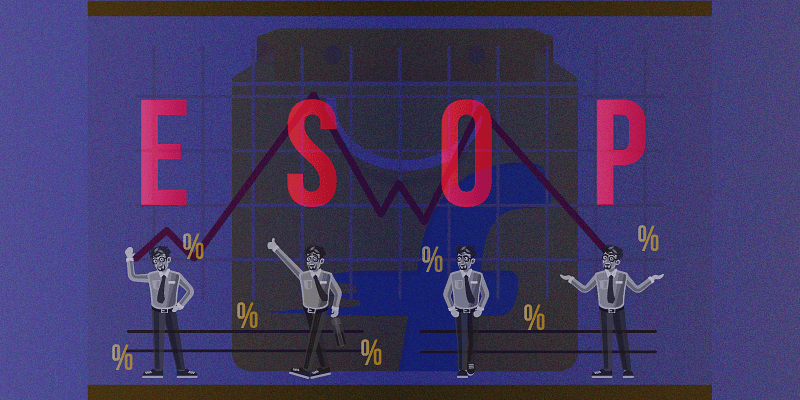Understanding the Ideal Uptime Rate for Websites
Understanding Website Uptime: What Those Percentage Points Really Mean for Your Business "We offer 99.9% uptime!" You've seen this claim on many hosting providers and SaaS platforms. But what does it actually mean for your business? Is 99.9% good enough? And how much does that extra 0.09% to reach 99.99% really matter? After years of managing production systems, I've learned that understanding uptime isn't just about numbers—it's about translating those percentages into business impact. Let's break it down in practical terms. What Uptime Percentages Actually Mean Let's start by translating those seemingly impressive uptime percentages into actual downtime: 99% uptime = 3.65 days of downtime per year 99.9% uptime = 8.76 hours of downtime per year 99.99% uptime = 52.56 minutes of downtime per year 99.999% uptime = 5.26 minutes of downtime per year That's a dramatic difference. Moving from 99.9% ("three nines") to 99.99% ("four nines") means reducing your annual downtime from almost a full workday to less than an hour. But here's the key question: does your business actually need that level of reliability? The Real Business Impact of Downtime Different types of downtime affect businesses in vastly different ways: Impact Type How It Manifests Long-term Implications Revenue Impact Direct loss of sales during outage A medium-sized e-commerce site processing $10,000/hour could lose $87,600 annually with 99.9% uptime if outages occur during peak times Customer Trust Impact Progressive erosion of customer confidence Trust erosion varies by industry - banking customers have much lower tolerance than blog readers SEO & Ranking Impact Search engines penalize unreliable sites Sites with frequent downtime see gradual ranking decreases, especially for competitive keywords Brand Reputation Social media amplifies outage visibility Recovery from reputation damage takes 3-6x longer than the technical recovery Industry-Specific Uptime Benchmarks Different industries have developed standard expectations based on business requirements: Industry Typical Uptime Target Why This Level Makes Sense E-commerce 99.9% - 99.99% Higher during sales events; checkout flow needs higher reliability than product browsing Financial Services 99.99% - 99.999% Regulatory requirements and direct revenue impact demand higher reliability Healthcare 99.99%+ for critical systems Patient safety can be at risk; compliance requirements Small Business Sites 99% - 99.9% Cost sensitivity balances against lower traffic and revenue impact Understanding the SLA Behind Uptime Guarantees A Service Level Agreement transforms an uptime percentage from a marketing claim into a binding commitment. Here's what should be in any uptime SLA: 1. Clear Definition of "Downtime" This is surprisingly contentious! Is a service considered "down" when: It's completely unreachable? It's responding but with 10-second latency? Core functions work but secondary features fail? It's down for some users but not others? Good SLAs define downtime precisely to avoid disputes. 2. Measurement Methodology The SLA should specify: How uptime is measured (which monitoring tools/methods) Monitoring frequency (checks every 1 minute vs. 5 minutes) Monitoring locations (checked from multiple regions vs. single location) What constitutes a confirmed outage (e.g., failed checks from at least 2 locations) 3. Exclusions and Maintenance Windows Most SLAs exclude: Scheduled maintenance (with proper notice) Issues caused by customer actions Force majeure events Third-party or network issues beyond provider control 4. Remedies for Violations What happens when the SLA is breached: Service credits (typically 5-30% of monthly fees) Financial penalties Termination rights for repeated violations Remember that SLA credits rarely cover the actual business impact of downtime—they're meant as an incentive for providers, not full compensation. Common Uptime Pitfalls to Avoid After seeing hundreds of uptime strategies implemented, these are the most common mistakes: 1. Focusing Only on Infrastructure Uptime Your server being up doesn't mean your service is working. I've seen many cases where monitoring showed "all green" while users couldn't complete critical functions due to: Database connection pool exhaustion Third-party API failures Expired certificates or credentials Failed deployments with partial functionality 2. Ignoring the Reliability Cliff Adding more components for redundancy can actually decrease reliability beyond a certain point: System with 3 components at 99.9% reliability each: - Needs all 3: 99.7% combined reliability (worse!) - Needs any 2: 99.97% combined reliability (better!) Design for appropriate redundancy with clear understanding of failure modes. 3. Neglectin

Understanding Website Uptime: What Those Percentage Points Really Mean for Your Business
"We offer 99.9% uptime!"
You've seen this claim on many hosting providers and SaaS platforms. But what does it actually mean for your business? Is 99.9% good enough? And how much does that extra 0.09% to reach 99.99% really matter?
After years of managing production systems, I've learned that understanding uptime isn't just about numbers—it's about translating those percentages into business impact. Let's break it down in practical terms.
What Uptime Percentages Actually Mean
Let's start by translating those seemingly impressive uptime percentages into actual downtime:
99% uptime = 3.65 days of downtime per year
99.9% uptime = 8.76 hours of downtime per year
99.99% uptime = 52.56 minutes of downtime per year
99.999% uptime = 5.26 minutes of downtime per year
That's a dramatic difference. Moving from 99.9% ("three nines") to 99.99% ("four nines") means reducing your annual downtime from almost a full workday to less than an hour.
But here's the key question: does your business actually need that level of reliability?
The Real Business Impact of Downtime
Different types of downtime affect businesses in vastly different ways:
| Impact Type | How It Manifests | Long-term Implications |
| Revenue Impact | Direct loss of sales during outage | A medium-sized e-commerce site processing $10,000/hour could lose $87,600 annually with 99.9% uptime if outages occur during peak times |
| Customer Trust Impact | Progressive erosion of customer confidence | Trust erosion varies by industry - banking customers have much lower tolerance than blog readers |
| SEO & Ranking Impact | Search engines penalize unreliable sites | Sites with frequent downtime see gradual ranking decreases, especially for competitive keywords |
| Brand Reputation | Social media amplifies outage visibility | Recovery from reputation damage takes 3-6x longer than the technical recovery |
Industry-Specific Uptime Benchmarks
Different industries have developed standard expectations based on business requirements:
| Industry | Typical Uptime Target | Why This Level Makes Sense |
| E-commerce | 99.9% - 99.99% | Higher during sales events; checkout flow needs higher reliability than product browsing |
| Financial Services | 99.99% - 99.999% | Regulatory requirements and direct revenue impact demand higher reliability |
| Healthcare | 99.99%+ for critical systems | Patient safety can be at risk; compliance requirements |
| Small Business Sites | 99% - 99.9% | Cost sensitivity balances against lower traffic and revenue impact |
Understanding the SLA Behind Uptime Guarantees
A Service Level Agreement transforms an uptime percentage from a marketing claim into a binding commitment. Here's what should be in any uptime SLA:
1. Clear Definition of "Downtime"
This is surprisingly contentious! Is a service considered "down" when:
It's completely unreachable?
It's responding but with 10-second latency?
Core functions work but secondary features fail?
It's down for some users but not others?
Good SLAs define downtime precisely to avoid disputes.
2. Measurement Methodology
The SLA should specify:
How uptime is measured (which monitoring tools/methods)
Monitoring frequency (checks every 1 minute vs. 5 minutes)
Monitoring locations (checked from multiple regions vs. single location)
What constitutes a confirmed outage (e.g., failed checks from at least 2 locations)
3. Exclusions and Maintenance Windows
Most SLAs exclude:
Scheduled maintenance (with proper notice)
Issues caused by customer actions
Force majeure events
Third-party or network issues beyond provider control
4. Remedies for Violations
What happens when the SLA is breached:
Service credits (typically 5-30% of monthly fees)
Financial penalties
Termination rights for repeated violations
Remember that SLA credits rarely cover the actual business impact of downtime—they're meant as an incentive for providers, not full compensation.
Common Uptime Pitfalls to Avoid
After seeing hundreds of uptime strategies implemented, these are the most common mistakes:
1. Focusing Only on Infrastructure Uptime
Your server being up doesn't mean your service is working. I've seen many cases where monitoring showed "all green" while users couldn't complete critical functions due to:
Database connection pool exhaustion
Third-party API failures
Expired certificates or credentials
Failed deployments with partial functionality
2. Ignoring the Reliability Cliff
Adding more components for redundancy can actually decrease reliability beyond a certain point:
System with 3 components at 99.9% reliability each:
- Needs all 3: 99.7% combined reliability (worse!)
- Needs any 2: 99.97% combined reliability (better!)
Design for appropriate redundancy with clear understanding of failure modes.
3. Neglecting Human Factors
The majority of outages involve human error somewhere in the chain:
Configuration mistakes
Deployment errors
Accidental data deletion
Incorrect incident response
Build systems that resist human error through automation, validation, and clear processes.
4. Settling for Inadequate Monitoring
You need monitoring that:
Checks from multiple locations to detect regional issues
Verifies functionality, not just connectivity
Alerts the right people through appropriate channels
Provides context to speed troubleshooting
Maintains historical data for pattern analysis
Without this visibility, you're essentially hoping for uptime rather than ensuring it.
Conclusion: The Path to Appropriate Uptime
The key word here is "appropriate"—not maximum. Few businesses truly need 99.999% uptime, and pursuing excessive reliability creates unnecessary costs and complexity.
Instead:
Understand your actual business requirements
Set realistic uptime targets based on those needs
Design systems with appropriate redundancy and failover
Implement comprehensive monitoring to verify performance
Develop and test recovery procedures for inevitable failures
With this balanced approach, you can achieve the reliability your business needs without over-engineering or overspending.
For a deeper exploration of website uptime benchmarks, SLAs, and business impact analysis, check out our comprehensive guide on the Bubobot blog.
WebsiteUptime #Reliability #SLA
Read more at https://bubobot.com/blog/understanding-website-uptime-benchmarks-sl-as-and-business-impact?utm_source=dev.to








































































































































































![[The AI Show Episode 144]: ChatGPT’s New Memory, Shopify CEO’s Leaked “AI First” Memo, Google Cloud Next Releases, o3 and o4-mini Coming Soon & Llama 4’s Rocky Launch](https://www.marketingaiinstitute.com/hubfs/ep%20144%20cover.png)



































































































































![From fast food worker to cybersecurity engineer with Tae'lur Alexis [Podcast #169]](https://cdn.hashnode.com/res/hashnode/image/upload/v1745242807605/8a6cf71c-144f-4c91-9532-62d7c92c0f65.png?#)
























![BPMN-procesmodellering [closed]](https://i.sstatic.net/l7l8q49F.png)


























































































































.webp?#)













































































































![Next Generation iPhone 17e Nears Trial Production [Rumor]](https://www.iclarified.com/images/news/97083/97083/97083-640.jpg)
![Apple Releases iOS 18.5 Beta 3 and iPadOS 18.5 Beta 3 [Download]](https://www.iclarified.com/images/news/97076/97076/97076-640.jpg)
![Apple Seeds visionOS 2.5 Beta 3 to Developers [Download]](https://www.iclarified.com/images/news/97077/97077/97077-640.jpg)
![Apple Seeds tvOS 18.5 Beta 3 to Developers [Download]](https://www.iclarified.com/images/news/97078/97078/97078-640.jpg)





























































































































